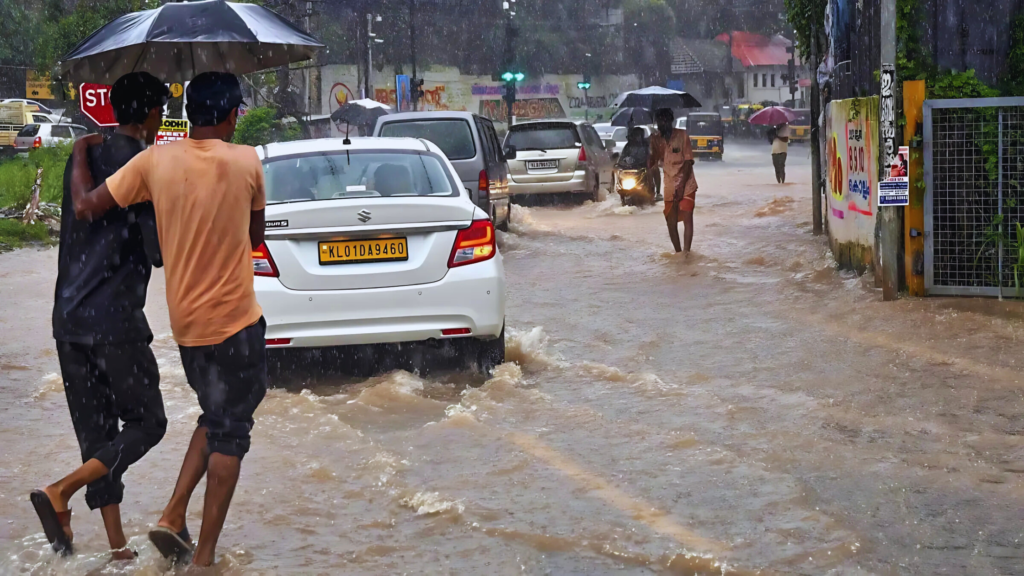A Surprise from the Skies
In a rare and remarkable weather event, the southwest monsoon officially made landfall in Kerala on May 24, 2025. Marking the earliest onset in India since 2009. This early arrival, confirmed by the India Meteorological Department (IMD). Has brought unexpected relief from the heat and optimism for the agricultural sector. Typically, the monsoon is expected to arrive around June 1, but this year, nature had other plans.
Why This Early Onset Matters
The early onset of the monsoon is more than just a meteorological anomaly—it has real-life implications for millions of people, especially farmers. The monsoon is the lifeblood of Indian agriculture, as around 50% of India’s farmland is rain-fed. An early arrival often leads to the timely sowing of kharif crops like paddy, cotton, maize, and soybeans. This can lead to better crop yields, improve food security, and even help stabilize inflation.
For the Indian economy, which is closely tied to the performance of the agricultural sector, an early and strong monsoon can boost rural incomes, increase consumption, and uplift overall sentiment in markets.
What Triggered the Early Monsoon?
According to IMD scientists, a combination of favorable sea surface temperatures in the Arabian Sea, strengthening westerly winds, and a low-pressure area forming off the coast of Kerala contributed to the early onset. These conditions helped the monsoon winds advance faster than expected.
Another key factor was the rapid northward shift of the Inter-Tropical Convergence Zone (ITCZ), which plays a crucial role in the monsoon mechanism. Meteorologists had already predicted an above-normal monsoon this year due to the fading El Niño effect and rising chances of a La Niña pattern developing later in the season.
Rainfall and Impact in Kerala
Kerala, the gateway of the Indian monsoon, has been experiencing widespread rainfall over the past few days. IMD reports show moderate to heavy showers across several districts including Thiruvananthapuram, Kollam, Alappuzha, Ernakulam, and Kozhikode.
Along with the rainfall, wind speeds have picked up, and fishermen have been advised not to venture out into the Arabian Sea for the next few days due to rough sea conditions. The state administration is on alert for potential landslides and waterlogging in vulnerable areas, especially in the Western Ghats region.
Where Does the Monsoon Head Next?
With its arrival in Kerala, the southwest monsoon will gradually move northward and cover Karnataka, Goa, and parts of Tamil Nadu and Andhra Pradesh in the coming days. The IMD has issued heavy rainfall warnings for coastal and south interior Karnataka, with early showers already hitting Mangaluru, Udupi, and parts of Bengaluru.
Within two weeks, the monsoon is expected to reach Maharashtra, Telangana, Odisha, and West Bengal, eventually covering Delhi, Uttar Pradesh, and Bihar by early to mid-June. If the current pace continues, it may cover the entire country earlier than usual, a positive sign for farmers and water resource managers.
Benefits of an Early Monsoon
An early and well-distributed monsoon brings several key benefits:
- Timely Crop Sowing – Farmers can begin planting early, which often leads to higher yields and reduced crop stress.
- Water Reservoir Refill – Dams and reservoirs start filling sooner, ensuring adequate water supply for irrigation and drinking purposes.
- Reduced Heatwaves – Parts of India suffering from severe summer temperatures get early relief from sweltering conditions.
- Improved Groundwater Levels – Early rainwater recharge helps combat water shortages in urban and rural areas.
- Boost to Rural Economy – A healthy monsoon cycle drives employment in agriculture and rural industries.
Challenges That Come with Early Rain
Despite the positives, early monsoons can also bring challenges. In some areas, farmers who are not ready for sowing may miss the optimal planting window. In regions where pre-monsoon infrastructure work—like drainage cleaning—is incomplete, early rains can cause flooding and property damage.
Moreover, if the monsoon fades early or becomes erratic in the later phases, it can create moisture stress during critical crop growth stages. Therefore, the quality of rainfall distribution over the next four months will be more important than just an early start.
What IMD Predicts for the 2025 Monsoon Season
The IMD has forecasted a normal to above-normal monsoon for 2025, which means India could receive more than 96% of its Long Period Average (LPA) rainfall between June and September. With El Niño weakening and chances of La Niña conditions developing by mid-June, the outlook for rain is optimistic.
The department also plans to update its region-wise rainfall forecast in the coming weeks. Farmers and policymakers are closely watching these announcements, as they guide irrigation strategies, fertilizer application, and overall crop management.
Conclusion: A Promising Start, But Caution Required
The early arrival of the monsoon in Kerala is a positive sign for the country’s agriculture and water management systems. It raises hopes for good harvests, better economic output, and rural prosperity. However, both the government and the farming community must be prepared for the monsoon’s unpredictable nature.
As rainfall moves across the country, timely advisories, weather forecasts, and efficient water management will be key in making the most of this early blessing from the skies. If handled wisely, the 2025 monsoon could be one of the most beneficial seasons India has seen in recent years.





















